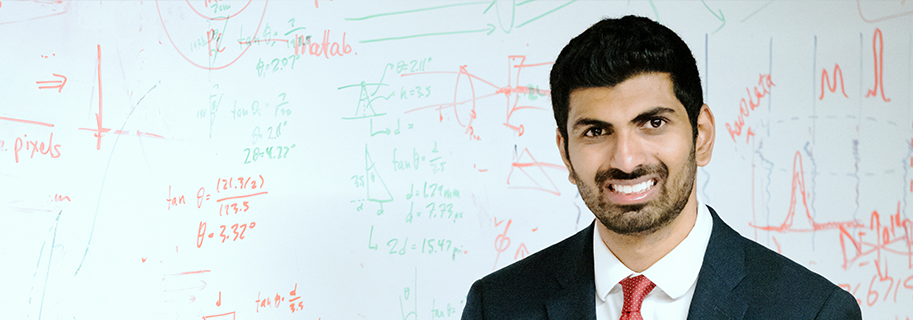
Achuta Kadambi is an assistant professor of electrical and computer engineering (ECE) and computer science (CS) at the UCLA Samueli School of Engineering. He leads the Visual Machines Group at UCLA, which focuses on building computational imaging systems with applications in robotics and health care. Through his research, Kadambi aims to address implicit biases in medical and other devices and to explore pragmatic solutions. Recently, he received the Outstanding Young Professional Award from the honor society Eta Kappa Nu of the Institute of Electrical and Electronics Engineers (IEEE).
“In my lab, undergraduate students get an opportunity to publish research, which for many is their first scientific publication. This experience enables them to have some insight into what a future career in research could look like.”
Q: What are some of the main research projects that you are focusing on in 2023?
A: My lab aims to “see the invisible,” whether that applies to developing new imaging systems that can help self-driving cars see through fog, or building surgical robots that can see deeper into tissue. Currently, our main goal is to make light-based medical devices sense more equitably across demographics and more accurately for everyone. Unfortunately, this problem is hard to solve because the bias starts from laws of physics. Light is a super sensitive cue for medical measurement, but this same sensitivity is a double-edged sword because it is strongly biased against, for example, darker skin tones, as well as other phenotypes. We try to approach this problem by redesigning both the computational and hardware layer to assess bias at multiple levels. More on this discussion can be found in this piece: Science recently, titled “Achieving Fairness in Medical Devices.”
Q: Dr. Laleh Jalilian at UCLA Health has been a key colleague and partner in your contactless biosensor technology research. How did your partnership develop and why is interdisciplinary collaboration so important to your research?
A: Dr. Jalilian and I were both pursuing our undergraduate degrees at UC Berkeley at the same time, and it is great to have the opportunity to collaborate with each other now that we are both faculty at UCLA. Because Dr. Jalilian is both an engineer and a doctor, she is able to co-develop new inventions from the brainstorming phase all the way through to completion.
Working at a university like UCLA means that we are in a very unique atmosphere that helps us to scale faster. Our relationship and collaboration with UCLA Health, for example, allows us to deploy engineering inventions to the hospital, whereas at a Tech Startup, or somewhere else, we might not have this type of direct partnership.
Q: How do you work with undergraduate and graduate students on these research projects?
A: In my lab, undergraduate students get an opportunity to publish research, which for many is their first scientific publication. This experience enables them to have some insight into what a future career in research could look like. For graduate students, the goal is to be the inventor of new technologies, which means they work on how to scientifically plan experiments and projects.
Q: How could private funding through donor gifts enable you to further your research at UCLA?
A: Donor support is crucial to the success of a public-serving lab and we rely on the support of generous donors for a significant portion of our funding. We serve the public not only through the creation of new inventions, but also through the mentorship and training of students across California and the world.
